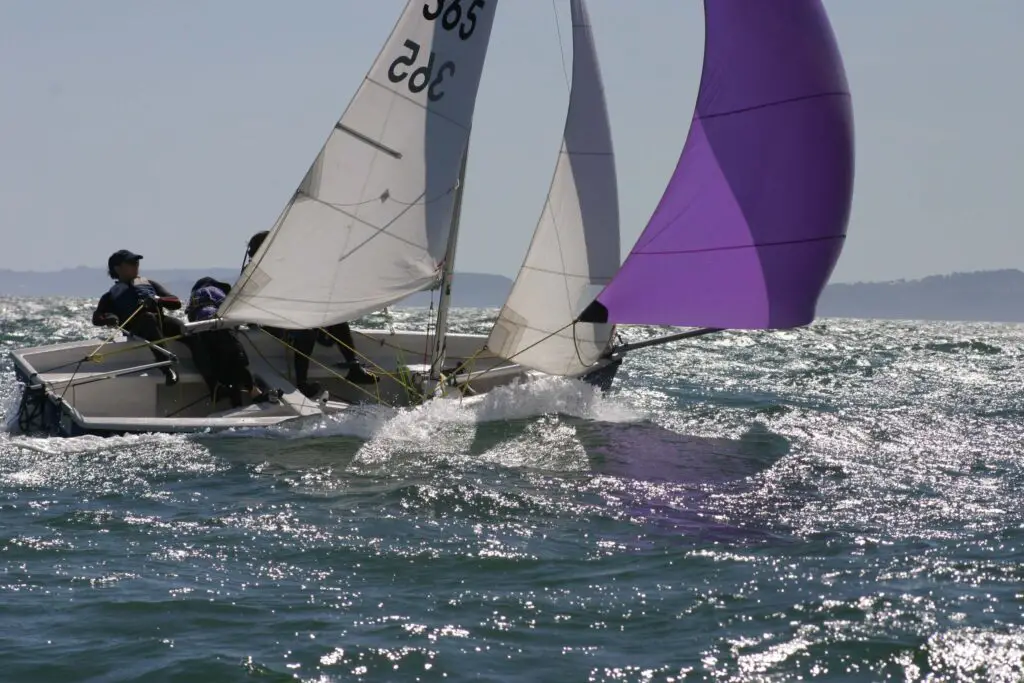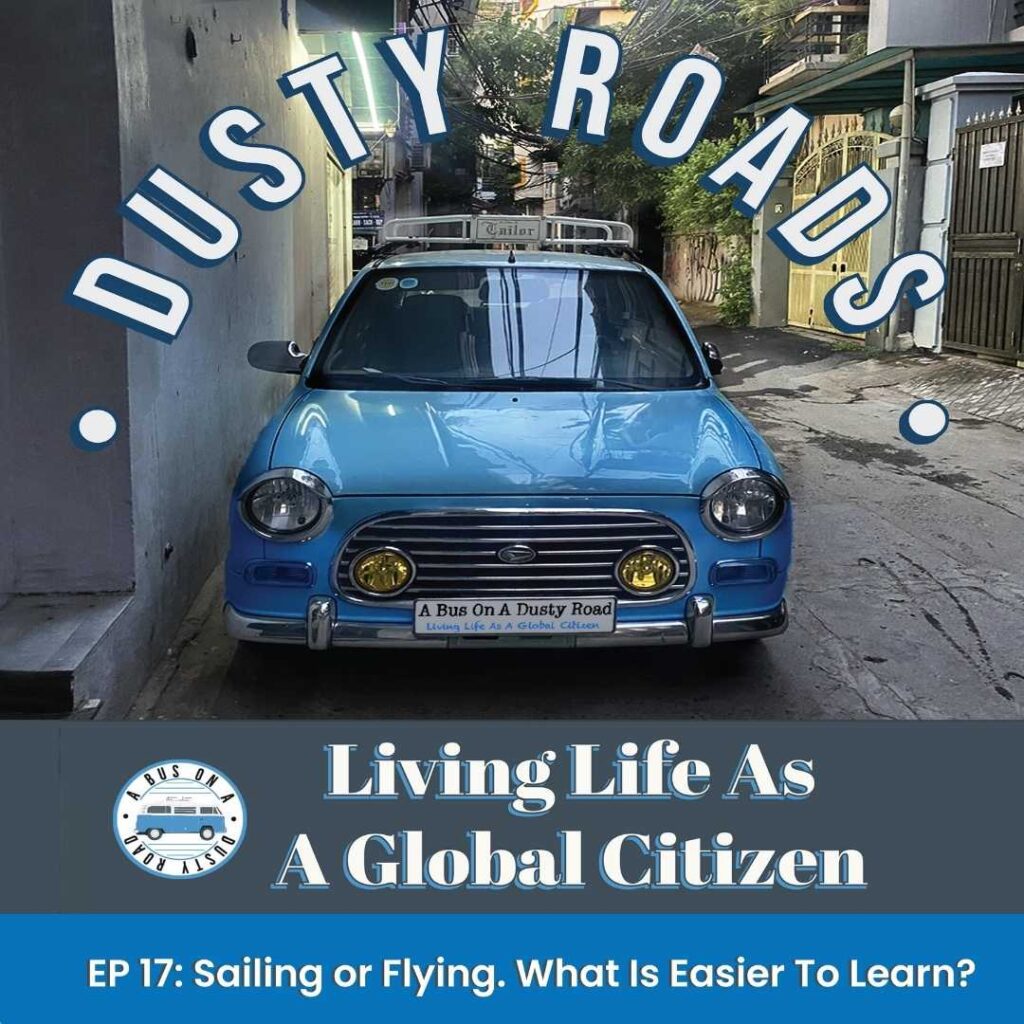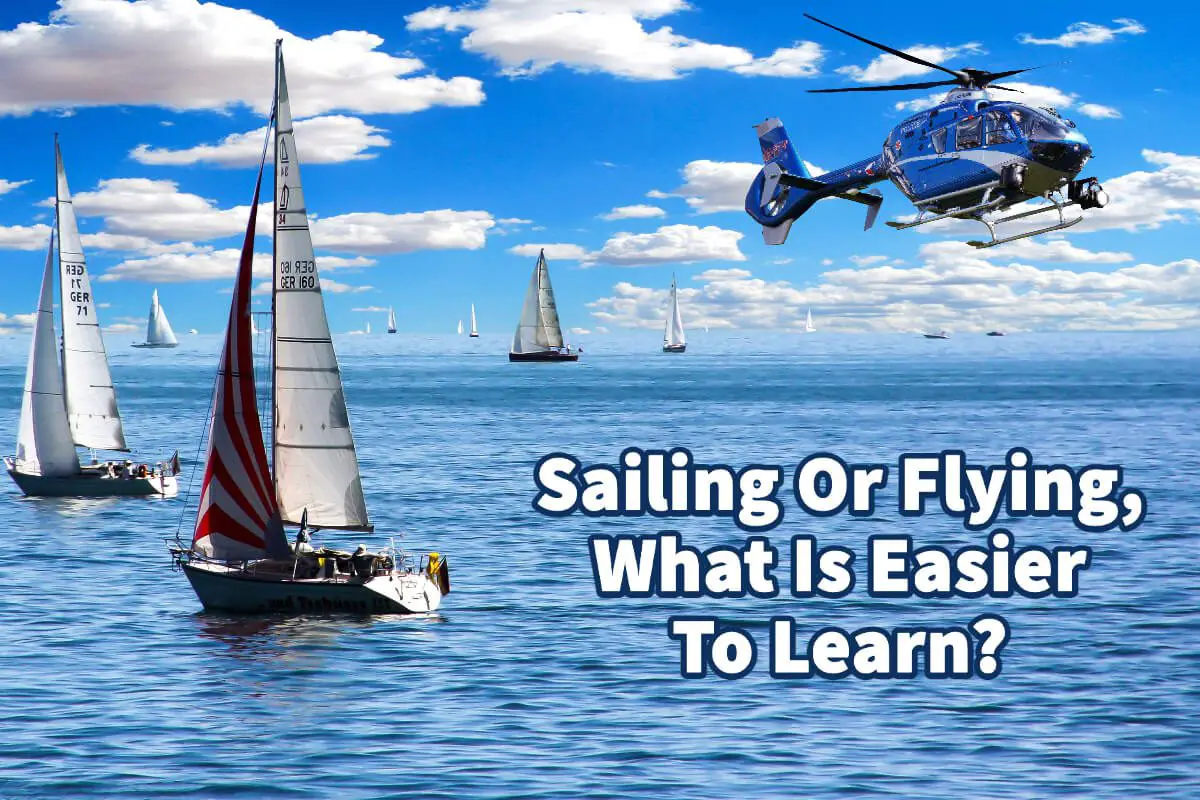I have taken flying and sailing lessons, so I understand which is easier to learn. Both flying and sailing are skills you need to obtain.
Sailing and flying require time and commitment to learning, but sailing is usually a more leisurely sport to master than flying. Learning to fly will require a lot of safety, technical, and other aspects; if the pilot gets it wrong or goes into the wrong air space, other lives could be in danger. Sailing, you are out there on the water, and you usually are not even close to other boats or people. We recommend that everyone take a sailing course to learn the basics, but you are not required to be licensed to sail in many places.
Table of Contents
- Sailing Vs. Flying, What Is Easier To Learn?
- 11 Reasons Why Sailing is an Exceptional Sport
- Frequently Asked Questions
- Related Questions
Sailing Vs. Flying, What Is Easier To Learn?
If you are going to learn to sail or fly, the truth is that both of these will require money and commitment. Both sailing and flying take time, and you need to learn them before you can even master either of them.
Time Commitment To Learn Sailing Vs. Flying

Both sailing and flying will take some time commitment. But the time commitment to learn to sail will usually be less than flying.
In the United States, you can fly solo after mastering 20 hours of training with an instructor. Getting your private pilot license is at least 40 hours, or most say a minimum of two months. To fly, you must commit to at least two months of learning.
You can take an intensive weekend course to get your light air rating or a two-week course to learn to sail. That, of course, is just the basics, and you will need to have experience and then continue to intermediate and advanced.
But if you do not want to take a course, nothing says you must have instruction to sail a pleasure boat—many sail which have never taken a class or been inside a classroom.
Skills Required To Learn Sailing Vs. Flying
The process of flying is relatively easy to learn, but all the other things, such as the systems, air space, navigation, and communications, are pretty complex. Aviation has a lot of technical knowledge that you must learn and master.
Once you are out on the water, the actual sailing process is not that difficult. The hardest part is turning the boat around and getting it out of the dock and back into the dock. All of those things take practice and skill.
Safety Concerns for Sailing And Flying
Even the very best pilots have gotten into issues while flying. Some of them lost their lives in the process as they crashed. The fact that it just takes one crash in a small plane to take your life away makes flying more of a safety concern than sailing.
Sailing also requires safety issues. But sailing is usually not life-threatening if you do not try to out in the high winds or a giant thunderstorm, or you capsize the boat in freezing water or cannot swim.
Most states and even countries require you to say that you always have a life vest. If you fall off the boat, you should not drown as you have on a life vest to keep your head above water even if you can not swim.
License To Sail Vs. Fly
To be able to fly an airplane, you will be flying in and around commercial airlines. In some cases, you may even be sharing airspace and runways.
To fly, you need to have a license similar to having a legal license to drive a car or motorcycle.
Sailing a pleasure boat in most states does not require that you have a license. Even children can technically have a small sailboat and go out on the lake or the ocean with a boat (though we believe no parents should allow their children out on a boat without proper instruction or tools).

Listen To Our Podcast About Sailing or Flying. What Is Easier To Learn? Below or by clicking here.
Stress Of Sailing Vs. Flying

There can be something relaxing about both sailing and flying. When you are flying, you are up above the world and see life as it’s below you.
But with flying, if something goes wrong, you must be able to make rapid, split-second decisions, or your life and the lives of your passengers may be in danger. One of the biggest challenges with flying is that you need to be able to handle that kind of stress.
When you are flying, you can never really coast along. If your engine dies on takeoff, you have about a quarter of a second to figure out what you are doing to not crash the plane.
The challenge with flying is that you must always be mentally prepared to handle an emergency and have just a few seconds to decide. With flight, you must be so well trained that the correct decision is the right one, and you are automatically making that correct decision as your life and the life of your passengers depend on it.
If you get in trouble with sailing, you can bring down all your sails and radio for help. You can swim on the shore if you are not too far from the shore.
Unlike flying with sailing, you have time to think. If unsure, you can sit out in the boat and figure it out.
The fact that, usually, for sailing, you have time to figure things out makes sailing a lot less stressful than flying. You can sit back in the boat and glide along if you choose. There is something very relaxing about that.
Cost To Learn Sailing Vs. Flying
There is also a difference in the cost to sail vs. fly. If you want to fly, you need access to a plane. Buying, maintaining, and renting a plane takes money. Even getting fuel into the plane these days can be costly.
You must have a license to fly, so it is not a skill you can learn independently. You must be willing to pay the cost for the private pilot license, which can range from $ 4,000 to $15,000, with the average being about $10,000.
Learning To Fly Is An Expensive Commitment
With sailing, you can buy a small boat, even a dingy sailboat, and go out to sail. You can rent a boat or join a sailing club with boats you can take out.
You can learn to sail the boat yourself by taking it out on the water, or we recommend that everyone take some sailing courses to know and understand all the basics. I recently signed up for the Milwaukee Community Sailing Center course, and I needed to pay the annual fee plus $240 to take the course.
Just by the prices alone, sailing is easier to learn than flying, as learning to fly will take considerable time and money. Sailing will also make some money, time, and commitment, but not as much learning to fly.
11 Reasons Why Sailing is an Exceptional Sport
Sailing isn’t just a sport for me; it’s a captivating dance with the wind and waves. Over time, I’ve realized just how unique and versatile this activity is.
Here are 11 reasons, rooted in my personal experiences, that highlight the brilliance of sailing:
- Universal Appeal: Sailing truly is a great sport. It combines athleticism, strategy, and a connection with nature, making it a unique and fulfilling experience.
- Safety First: Contrary to what some might believe, sailing is a remarkably safe sport with proper training and adherence to guidelines. It teaches you how to harness the wind and the importance of safety precautions.
- For All Ages: One of the beauties of sailing is its inclusivity. Whether you’re a child learning the ropes or a senior enjoying the serenity of the sea, sailing accommodates everyone.
- Tranquil Moments: There’s an unparalleled calmness in being out on the water. The gentle lapping of waves, the caress of the breeze – it’s therapeutic, providing a sanctuary from the hustle of daily life.
- Physical Exercise: Sailing is a holistic workout. From hoisting sails to balancing the boat, it engages various muscle groups, ensuring you get a dose of fitness with fun.
- Mental Challenge: Beyond the physical aspect, sailing is a cerebral sport. It demands strategic thinking, spatial awareness, and quick decision-making, making every trip both fun and intellectually stimulating.
- Connect with Nature: Sailing offers a direct line to the oceans’ vastness and the earth’s rhythm in a world increasingly detached from nature.
- Learn Valuable Skills: From understanding weather patterns to knot-tying and navigation, sailing equips you with a range of skills that are valuable even off the boat.
- Sense of Achievement: Every successful sail and mastered maneuver feels like a personal triumph, boosting confidence and self-worth.
- Builds Camaraderie: Sailing fosters teamwork and trust. Whether racing or cruising, the shared experiences and challenges create lasting bonds.
- Environmentally Friendly: Powered by the wind, sailing is a green sport. It allows you to enjoy the outdoors without leaving a significant carbon footprint.
Sailing is more than just steering a boat; it’s about embracing the elements, celebrating the dance of wind and water, and cherishing the lessons and joys it brings. Whether seeking thrill, tranquility, or camaraderie, sailing offers it all, making it a sport truly worth diving into.
At A Bus On A Dusty Road, we talk about everything about travel, life, sailing, and ex-pat living. We are all about “Living Life As A Global Citizen.” We explore social, cultural, and economic issues and travel.
We would love to have you be part of our community. Sign up for our newsletter to keep up-to-date by clicking here. If you have any questions, you can contact me, Anita, by clicking here.
Listen to our Podcast called Dusty Roads. You can find it on all major podcast platforms. Try out listening to one of our podcasts by clicking here.
Subscribe to our A Bus On A Dusty Road YouTube Channel filled with great videos and information by clicking here.
Frequently Asked Questions
Is learning to sail or fly easier?
Learning to sail or fly can vary depending on individual preferences and aptitudes. Some find sailing easier, while others find flying easier. It ultimately depends on personal experience and comfort with water or air.
How long does it take to learn to sail?
The time it takes to learn to sail can vary. It may take a few days to grasp the basics, but becoming proficient and confident in handling a sailboat can take weeks or months of practice and experience.
How long does it take to learn to fly?
Learning to fly can be a more structured process and typically involves obtaining a pilot’s license. The time required to earn a license varies, but it often takes several months of training, including flight hours and theoretical knowledge.
What skills are necessary to learn to sail?
Learning to sail requires skills such as understanding wind direction, controlling the sails, maneuvering the boat, and basic navigation. It also involves knowledge of safety protocols and handling unforeseen situations.
What skills are necessary to learn to fly?
Learning to fly requires skills such as understanding aircraft controls, navigation, aerodynamics, weather interpretation, communication, and decision-making. It also involves knowledge of aviation regulations and safety procedures.
Can anyone learn to sail or fly?
Generally, anyone who meets the necessary physical and age requirements can learn to sail or fly. However, it is important to consult with instructors or training centers to determine specific prerequisites.
Which requires more physical exertion: sailing or flying?
Sailing generally requires more physical exertion as it involves handling sails, maneuvering the boat, and responding to wind and waves. Flying involves more mental concentration and physical coordination.
Can I learn to sail or fly without prior experience?
Yes, both sailing and flying can be learned without prior experience. Many training programs are designed to accommodate beginners and provide the necessary knowledge and skills.
Related Questions
All About Sailing In The Philippines
The Philippines has long been a sailors’ paradise for cruising and learning to sail a boat. For 7000 islands, there are many places that you can explore within the Philippines. It can be an area that can hit many typhoons, so to cruise or sail the Philippines, you need to understand the best time to go there.
By clicking here, you can discover All About Sailing In The Philippines.
How Much Wind Is Too Much For A Beginner Sailor?
For a beginner sailor, the wind is usually recommended to be under 10 knots. Those who are more experienced or with a larger boat can consider going up to 12 knots of wind. A knot is not the same as miles per hour or kilometers per hour but is faster than these measurements.
By clicking here, you can discover How Much Wind Is Too Much For A Beginner Sailor?
No Experience Sailing, 6 Tips To Get Started
If you are going to take up sailing, you first must get on a boat and find out if sailing is suitable. The best sailors can handle their boats in all kinds and types of weather. Find a class that you can join and get certified. Sailing requires knowledge and skill. Find yourself a sailing community that you can be part of.
By clicking here, you can discover No Experience Sailing, 6 Tips To Get Started.

